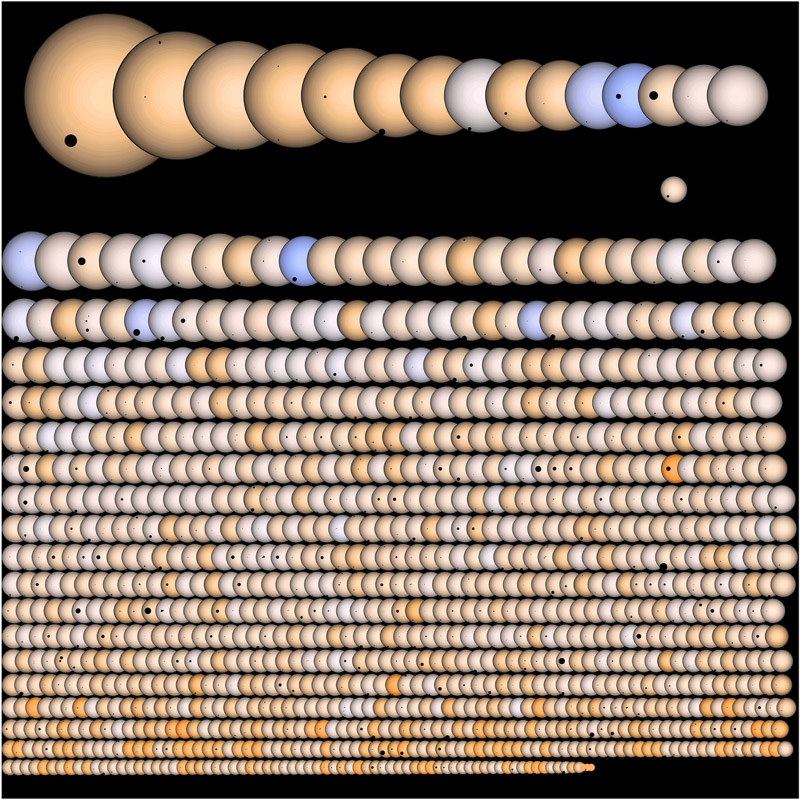Credit & Copyright: Jason Rowe,
Kepler Mission
Explanation:
Using the prolific
planet hunting
Kepler spacecraft, astronomers have
discovered
1,235 candidate planets orbiting other suns since the
Kepler mission's search for Earth-like worlds
began in 2009.
To find them, Kepler monitors
a rich star field to
identify planetary transits by the slight dimming of starlight
caused by a planet crossing the face of its parent star.
In this remarkable illustration,
all of Kepler's planet candidates
are shown in transit with their parent stars ordered by size from
top left to bottom right.
Stars and the silhouettes of transiting planets are all shown
at the same relative scale, with saturated
star colors.
Of course, some stars show
more than one planet in transit, but
you may have to
examine the picture at high resolution to spot
them all.
For reference, the Sun is shown at the same scale, by itself below
the top row on the right.
In silhouette against the Sun's disk, both Jupiter and Earth
are in transit.
1999 2000 2001 2002 2003 2004 2005 2006 2007 2008 2009 2010 2011 2012 2013 2014 2015 2016 2017 2018 2019 2020 2021 2022 2023 2024 2025 |
Январь Февраль Март Апрель Май Июнь Июль Август Сентябрь Октябрь Ноябрь Декабрь |
NASA Web Site Statements, Warnings, and Disclaimers
NASA Official: Jay Norris. Specific rights apply.
A service of: LHEA at NASA / GSFC
& Michigan Tech. U.
|
Публикации с ключевыми словами:
extrasolar planet - kepler - transit - экзопланета - Планеты у других звезд - Кеплер - Прохождение
Публикации со словами: extrasolar planet - kepler - transit - экзопланета - Планеты у других звезд - Кеплер - Прохождение | |
См. также:
Все публикации на ту же тему >> | |
